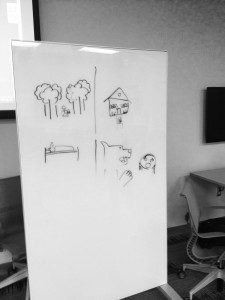Table six decided to create a satire of apocalyptic culture for our radio broadcast project. Orson Welles’s “War of the Worlds” inspired us to explore fictional radio broadcasts in American history. We borrowed some of the character-defining strategies used in “War of the Worlds” such as the incorporation of music and sound effects in the creation of our broadcast. Similarly, our broadcast also used call-ins for a feel of authenticity. However, that is where the similarities between our broadcast and “War of the Worlds” ends. Because apocalyptic culture so often focuses on aliens or zombies, we instead chose to have American cities simply disappear in our catastrophic event. We also peppered the dialogues between the two radio hosts with references to contemporary social and cultural tensions to undermine the urgency of the broadcast. Furthermore, the unbelievable call-ins parodied conspiracy theories and paranoia. We chose the twist in the ending to reflect the ways in which apocalyptic culture has conditioned us to jump to wild conclusions, especially when the information is presented in an official manner.
We used Audacity to create this recording. Gwen and Jess played the radio hosts Karen and Jay, while Mary voiced the call-ins.
Bibliography
Audio Productions. “White Noise Sound Effect.” YouTube. https://www.youtube.com/watch?v=Y3FtM9M94SI (accessed September 26, 2014).
Blue Swede. “Hooked on a Feeling.” YouTube. 1974. https://www.youtube.com/watch?v=m86nMHfvl7s (accessed September 26, 2014).
Cavendish, Richard. “Oct 30, 1938: Martians Invade New Jersey.” History Today, 58 (October 2008): 13. http://web.a.ebscohost.com.ezproxy.umw.edu/ehost/detail/detail?vid=14&sid=558735b3-c34a-4bd7-874e-25fde5ea4c38%40sessionmgr4005&hid=4214&bdata=JnNpdGU9ZWhvc3QtbGl2ZQ%3d%3d#db=ofm&AN=504198075 (accessed September 29, 2014).
Chiaroscuro, Aural. “The Emergency Radio Broadcast in Orson Welles’s ‘The War of the Worlds.’” English Language Notes, 46 (2008): 193-197. http://web.a.ebscohost.com.ezproxy.umw.edu/ehost/detail/detail?vid=4&sid=558735b3-c34a-4bd7-874e-25fde5ea4c38%40sessionmgr4005&hid=4214&bdata=JnNpdGU9ZWhvc3QtbGl2ZQ%3d%3d#db=a9h&AN=34045597 (accessed September 29, 2014).
Hayes, Joy Elizabeth and Kathleen Battles. “Exchange and Interconnection in US Network Radio: A Reinterpretation of the 1938 War of the Worlds Broadcast.” Radio Journal: International Studies in Broadcast and Audio Media, 9 (2011): 51-62. http://web.a.ebscohost.com.ezproxy.umw.edu/ehost/detail/detail?vid=1&sid=558735b3-c34a-4bd7-874e-25fde5ea4c38%40sessionmgr4005&hid=4214&bdata=JnNpdGU9ZWhvc3QtbGl2ZQ%3d%3d#db=ofm&AN=82571430 (accessed September 29, 2014).
“O Canada.”YouTube. https://www.youtube.com/watch?v=zwDvF0NtgdU (accessed September 26, 2014).
“The Purge Emergency Broadcasting System.” YouTube. https://www.youtube.com/watch?v=R7GMcgL2nro (accessed September 26, 2014).
R.E.M. “It’s the End of the World As We Know It (and I Feel Fine).” YouTube. 1987. https://www.youtube.com/watch?v=oIdPPVkkHYs (accessed September 26, 2014).

